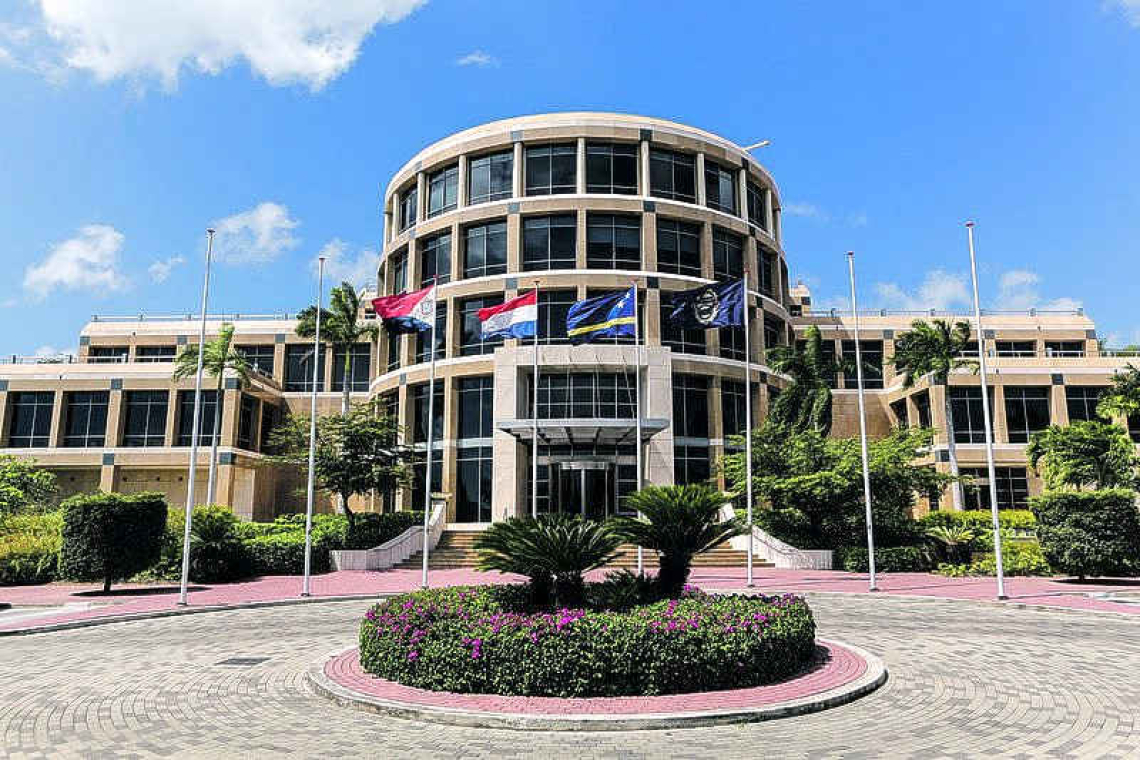PHILIPSBURG--The Central Bank of Curaçao and St. Maarten (CBCS) said the figure cited by the St. Maarten Hospitality and Trade Association (SHTA) that the Bank over reported travel exports by Cg. 800 million is an SHTA assumption and not a CBCS calculation.
“The over-reporting of Cg 800 million is an assumption/estimation by the SHTA, not a calculation by the CBCS. So, from the Central Bank perspective it’s not clear how this over estimation is calculated,” the CBCS told The Daily Herald Thursday in written answers to questions posed by this newspaper on the conclusion made by SHTA and whether CBCS stood by its figures.
CBCS said it had taken note of the article in the media in which the SHTA raises concerns about the tourism exports of St. Maarten as reported in the Balance of Payments statistics that the CBCS publishes on a quarterly basis.
On the specific claim, the CBCS said it could not provide a substantive response because of methodological differences: “The CBCS is not familiar with the survey-driven and occupancy-rate driven methodologies that the SHTA is referring to in the article, where SHTA suggests that the CBCS has an overestimation of Cg 800 million. As a result, CBCS is unable to provide a substantive response to the alleged overestimation mentioned by the SHTA.”
The Bank set out its own, standardized approach to calculating tourism foreign-exchange earnings. “To ensure consistency and comparability, the CBCS applies a standardized methodology: the average tourist spending per night per country is multiplied by the number of visitors from each country and their average length of stay.” The CBCS added that the “underlying data, average spending, visitor counts, and length of stay, is sourced from official authorities in Sint Maarten, based on comprehensive survey-based datasets.”
To strengthen those estimates, CBCS said it incorporates additional indicators, naming them specifically: “airport arrivals, transit and departures, aircraft landings, hotel occupancy rates, cruise ship calls, cruise passenger volumes, and the number of available rooms.”
The CBCS warned that its balance-of-payments statistics are central to policy. “Balance of payments statistics play a crucial role in guiding monetary policy decisions, ensuring external stability, and preserving the currency peg.” The Bank said those statistics also help policymakers spot external vulnerabilities — such as dependence on tourism, limited import source markets, or reliance on external financing — in an open economy.
The Central Bank spelled out the kinds of effects a real statistical discrepancy could have: “If a statistical discrepancy were to exist, it could have implications for example to government policy: Misalignment in fiscal planning, tourism investment strategies or expected/estimated (tax) income from tourism activities. Jobs and investments: Misguided resource allocation or overestimation of tourism’s economic contribution.” The Bank added that “however, CBCS emphasizes that its methodology is sound and internationally benchmarked, and no such discrepancy has been substantiated.”
On steps to improve data accuracy, the CBCS said it is implementing technical advice and expanding cooperation. “In 2024, CBCS received technical assistance from the IMF’s regional centre, CARTAC, and is now implementing recommendations to further enhance the compilation of its balance of payments statistics. Improvements focus on more accurate estimates of merchandise imports and foreign exchange earnings from tourism.”
To fill data gaps tied to visitors staying on the French side, the Bank said it has formalised a partnership: “To address data gaps related to visitors staying on the French side of Sint Maarten, the CBCS has formalized collaboration with IEDOM, the official institution responsible for collecting economic data in Saint-Martin.” The CBCS added that “Sint Maarten’s open border poses unique challenges for statistical work in a small island setting, making such cooperation essential to ensure accuracy in areas like room inventory and arrivals.”
The Central Bank said it remains engaged with international partners and local stakeholders to improve methods and transparency. “The CBCS remains actively engaged with international organizations such as the IMF, CARTAC and CERT whose continued use of CBCS data reflects the trust placed in the Bank’s statistics. This dialogue helps CBCS refine its methodologies and uphold the highest standards of transparency and reliability.” At home, the CBCS said: “At the national level, CBCS works closely with stakeholders through workshops and symposia to raise awareness about the importance of accurate data for economic policymaking.”
CBCS called for cooperation from domestic authorities and the private sector to close data gaps: “The Bank encourages all stakeholders to support data collection by providing timely and reliable indicators that help close gaps in official statistics. In particular, relevant authorities are urged to strengthen data on visitor flows at PJIA, while the private sector, including members of the SHTA, can contribute by routinely sharing indicators like the Average Daily Rate (ADR) and Revenue per Available Room (RevPAR). We welcome further dialogue and are open to working with all institutions to ensure the highest standards of data integrity and economic analysis.”







